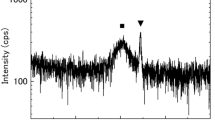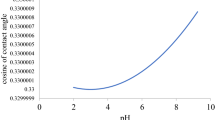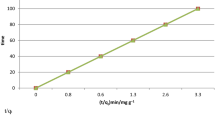Abstract
H. K. LIVINGSTON1 has recently attempted to relate the Brunauer – Emmett – Teller and Harkins – Jura equations by means of the Gibbs adsorption isotherm for solid surfaces. However, he has only applied his method to one of the limiting conditions of the Brunauer – Emmett – Teller equation. We have extended this method to include the complete form of the equation, in order to direct attention to the great importance of the value of constant n in these relations.
This is a preview of subscription content, access via your institution
Access options
Subscribe to this journal
Receive 51 print issues and online access
$199.00 per year
only $3.90 per issue
Buy this article
- Purchase on Springer Link
- Instant access to full article PDF
Prices may be subject to local taxes which are calculated during checkout
Similar content being viewed by others
References
Livingston, H. K., J. Chem. Phys., 15, 617 (1947).
Joyner, L. G., Weinberger, E. B., and Montgomery, C. W., J. Amer. Chem. Soc., 67, 2182 (1945).
Author information
Authors and Affiliations
Rights and permissions
About this article
Cite this article
SMITH, T., BELL, R. Relation Between the Brunauer–Emmett–Teller and Harkins–Jura Isotherms. Nature 162, 109–110 (1948). https://doi.org/10.1038/162109b0
Issue Date:
DOI: https://doi.org/10.1038/162109b0
Comments
By submitting a comment you agree to abide by our Terms and Community Guidelines. If you find something abusive or that does not comply with our terms or guidelines please flag it as inappropriate.



